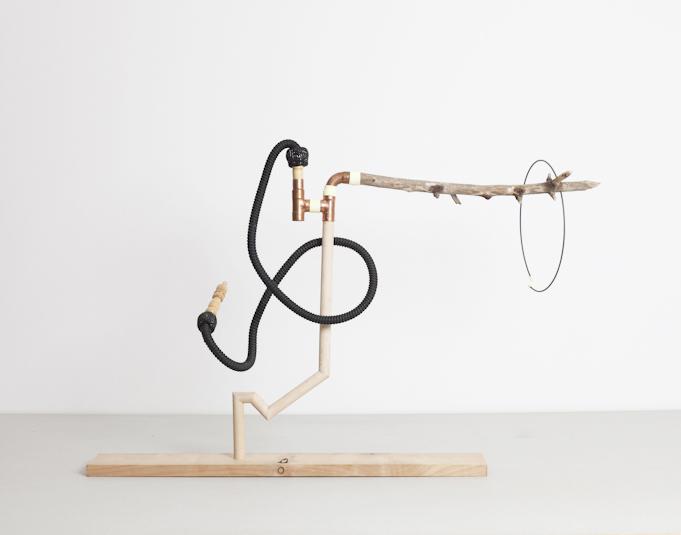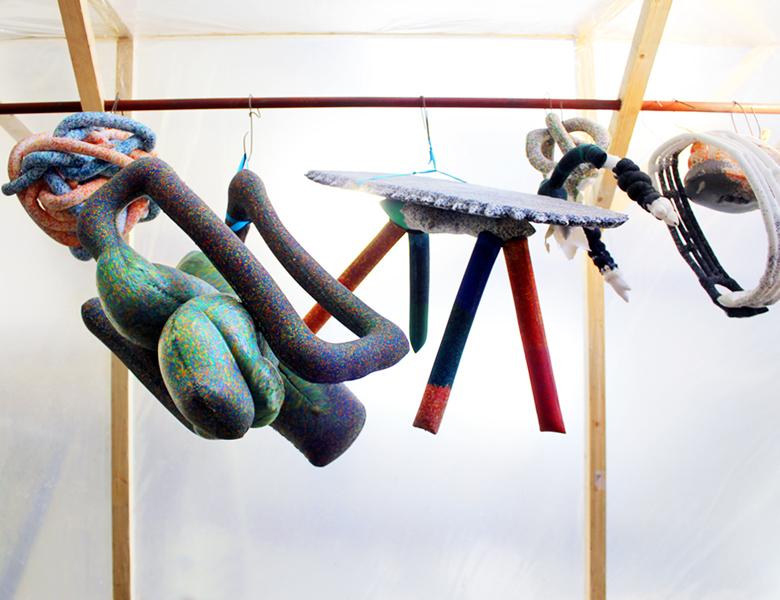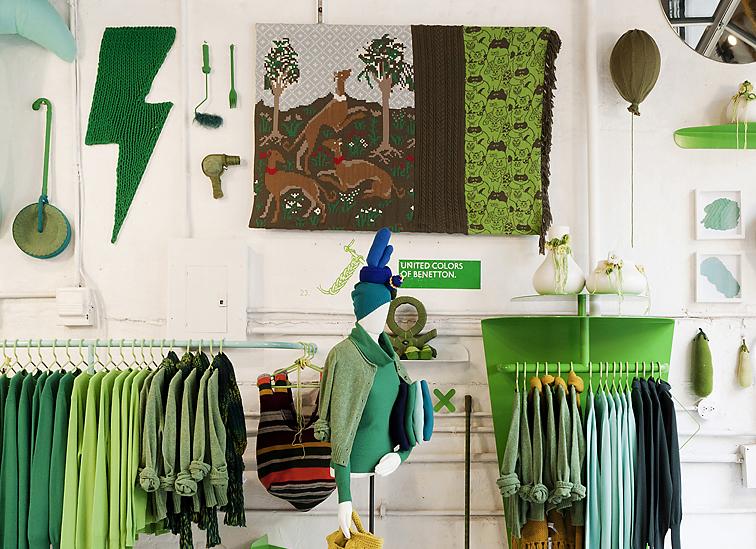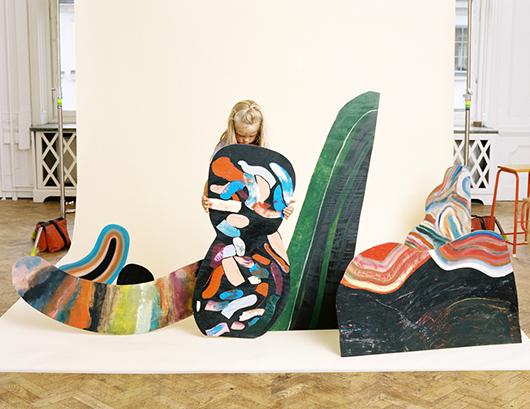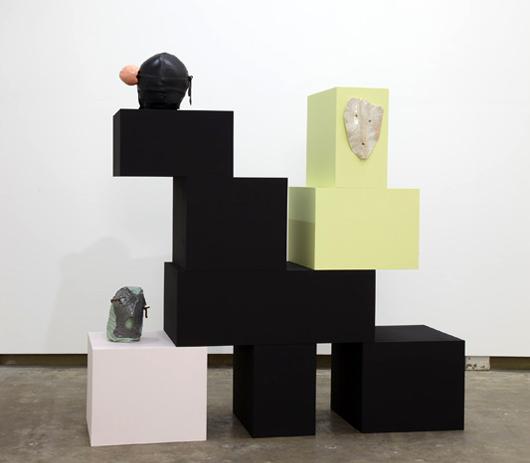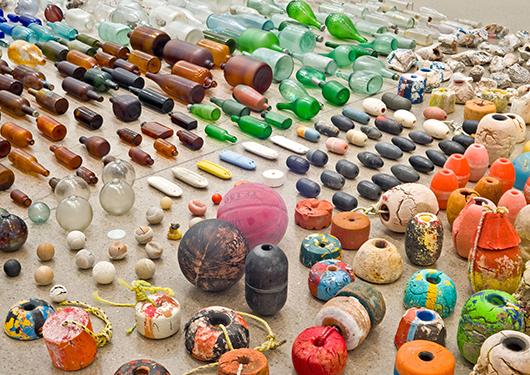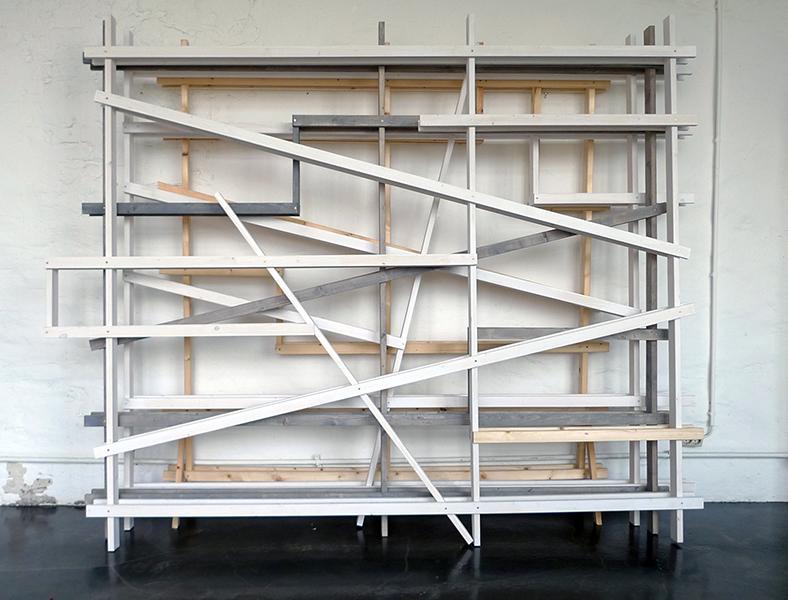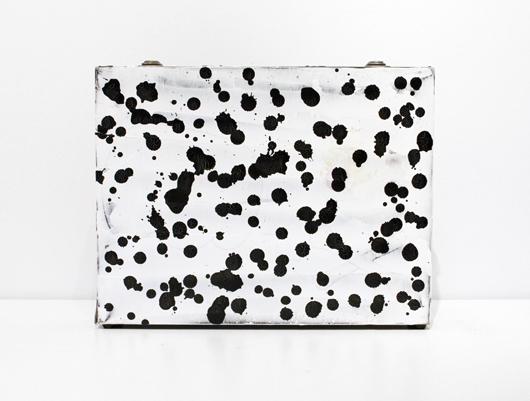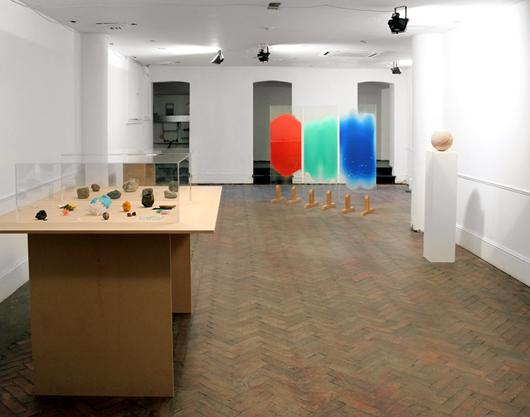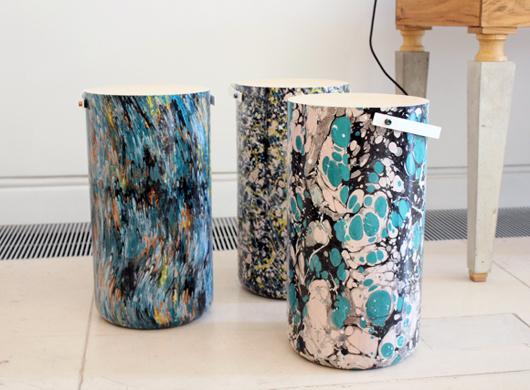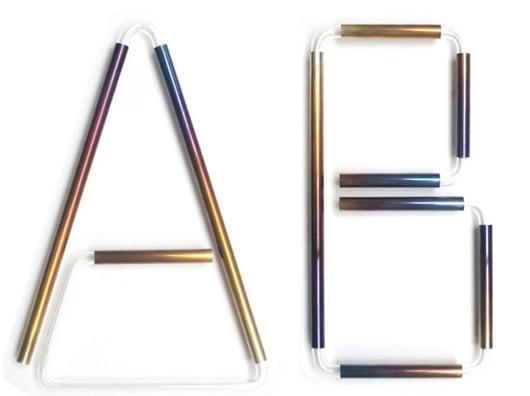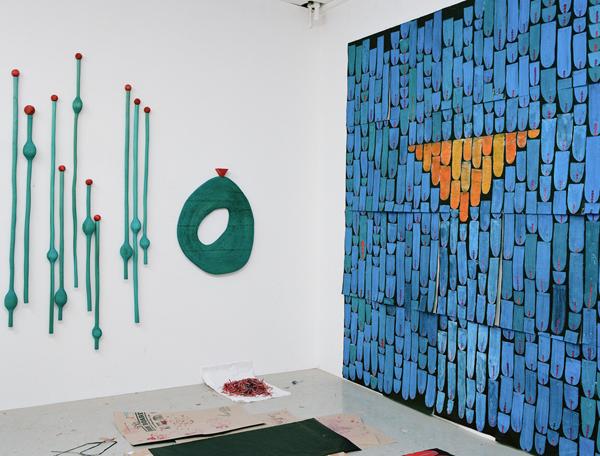
01.21.13
Sighted
Matthew Ronay on You Have Been Here Sometime
Long Island City, New York, is a vibrant up-and-coming neighborhood, home to MoMA PS1 and more than a few buzzy new restaurants. But it's also quite industrial, and prone to long, lonely stretches of aesthetic drabness that can alienate the casual visitor. The last time I toured an artist's studio there, nearly a decade ago, it was a woman who painted eye-poppingly bright, striated color fields almost compulsively, as if to insulate herself from the world outside her door. I don't purport to know Matthew Ronay's relationship with his adopted surroundings — he was born in Louisville, Kentucky in 1976 — but his paintings and sculptures certainly add up to one big escapist fantasy: His last big show in New York, at Andrea Rosen Gallery in 2011, was a three-dimensional enchanted forest populated with unidentifiable creatures and eyeball trees, while his latest work revolves around a wall that he imagines to be a portal to another world, perhaps one that looks less like a dreary factory yard and more like a sunny idyll. Maybe that's why Los Angeles designer and Sight Unseen pal David John is so drawn to it? John interviewed Ronay last week on his cult blog, You Have Been Here Sometime, and invited imminent Sight Unseen contributor Brian Ferry to shoot the artist's studio.
